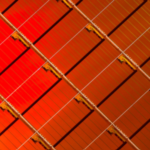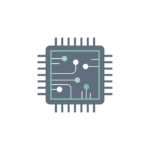Every electronic equipment faces the ongoing risk of noise, which may be minimised via the use of certain approaches even if it cannot be totally removed. As long as it doesn’t affect the performance of the system, noise is generally not a concern. Noise may negatively impact the operation of many printed circuit boards if it is not properly mitigated. This is especially true for high-frequency circuits, or those that operate at rates greater than one megahertz. At high frequencies, electromagnetic waves are generated within the components and all around the PCB traces, which can disrupt signals moving down other traces of the same PCB. The impact that these interferences have on the current and voltage values causes a decline in circuit performance and creates significant signal integrity issues.
Potential noise sources in a PCB
The most common source of noise on a PCB is current spikes that happen on some electrical signals. While analogue circuits depend on variations in load current, digital circuits generate current spikes during transistor switching (on-off and off-on transitions). Frequently, a floating ground or a bad ground connection can also be the cause of excessive noise. A single ground point is often adequate if the highest frequency of the signals on the PCB is less than 1 MHz, but multipoint or star ground connections are ideal for high frequency circuits, as illustrated in Figure 1. Another design option is the hybrid one, which employs both a single point for low frequencies and a multipoint for high frequencies.

The following categories apply to the primary noise sources:
- Ground bounce: In digital circuits, electrical signals have a limited amount of time to return to the ground reference level due to the quick and constant rise in switching frequencies. As a result, the signal may “bounce” over the surface of the earth, producing unexpected current spikes and noise in the output signal. The quantity of noise in the event of numerous simultaneous switching might also result in erroneous or duplicate switching, which will cause the circuit to fail.
- Crosstalk: If PCB traces are not appropriately separated from one another, it is possible for a signal (high frequency or high current) to affect the behaviour of a signal travelling on nearby trace. Crosstalk, a phenomena of unwanted electromagnetic coupling, can happen when traces are too close to one another vertically on neighbouring layers as well as horizontally on the same layer.
- EMI (Electromagnetic Interference): Although a variety of factors can cause electromagnetic interference, improperly built ground return lines are the most frequent example. Inserting signal traces between the power and ground planes, giving a smooth return path to the ground plane, is the general guideline to prevent these events. If this is not done, the return signal will travel inexplicably while attempting to reach earth, causing interference and noise.
We may examine the five most efficient methods for reducing noise on a printed circuit board after evaluating the primary noise sources.
1. Add ground and power planes
Try to use ground and power planes to cover as much of the board surface as you can when designing the PCB layout. You may want to set aside one layer for the ground plane and another for the power plane. Particularly for high frequency signals, ground planes must be built so that there is a clearly defined return path to the ground, minimising interruptions or excessive through usage.
If it is not feasible to build whole ground planes due to space constraints or financial constraints, link all of the ground traces at the common ground point using a single point (low frequencies) or star (high frequencies) grounding. The common impedance connection between the many subsystems is reduced by using this technique. Wherever practical, ground traces should run parallel to those carrying power signals.
2. Increase trace size
The PCB’s signal lines should be as short and thin as feasible. To keep traces brief, put through holes if required. In general, traces 4 to 8 mil broad and fewer than 8 mil thick are seen as an useful way to decrease capacitive coupling and subsequently noise, particularly at high frequencies. Additionally, to minimise the chance of crosstalk, the space between neighbouring traces must always be higher than their combined width. In general, multilayer PCBs are preferred because they enable the separation of ground, power, and signal layers.
A conductor’s inductance is directly proportional to its length and inversely proportional to the logarithm of its diameter. Therefore, the shortest and broadest traces must be used in order to minimise inductance. To reduce noise, single-stage or multistage filters should be applied to all PCB input signals and power lines.
3. Distinguish the PCB’s distinct zones
The PCB stackup arrangement is crucial since it impacts both signal integrity and noise reduction. Depending on where the layer is in the stackup, traces put on signal layers should utilise either the microstrip or stripline architecture. The arrangement of these layers affects both how much electromagnetic radiation the board emits and how resistant it is to radiation from outside sources.
Keep the analogue and digital circuitry separate on the PCB. These latter factors produce high frequency digital noise that can cause mistakes in both digital and analogue circuits, especially if the distance between the two circuits is insufficient. A similar standard may be used to determine frequency, therefore keeping high-frequency and low-frequency circuits apart may be a wise decision. Figure 2 depicts zoning in action.

4. Use decoupling capacitors
Noise reduction is significantly influenced by the PCB layout and the component placement. To minimise the inductance that may be produced between the through holes, power components should be placed near to one another and on the same layer. High frequency components need to be arranged such that their traces are as short as feasible. To minimise current spikes during signal switching and prevent bounce back to ground, the decoupling (or bypass) capacitors should be positioned as near as possible to each power pin of the active components. High capacitance tantalum capacitors are more costly than conventional electrolytic capacitors, but they provide better quality and performance. Multilayer ceramic capacitors, with capacitance values selected in accordance with the signal frequency (for example, 0.1 F for frequencies up to 15 MHz and 0.01 F for higher frequencies), can be used to decouple integrated circuits from one another.
5. Track your routing
As we previously stated, the action of decreasing or containing noise is often improved by making traces on the PCB shorter and broader, as the inductance of the traces themselves is decreased. This is particularly true for traces carrying signals with high current or frequency. Make sure the routing is horizontal on one layer and vertical on the other if there are two neighbouring signal layers on the PCB stackup. By doing this, the chance of coupling (crosstalk) between the traces positioned on the two levels is decreased. Both when the trace is placed on the same layer as the oscillator and when it is positioned on an adjacent layer, sensitive signal-carrying traces should be maintained away from oscillatory circuits. Avoid utilising 90° curves on your traces as a general guideline; instead, use two 45° angles in place of right angles.







